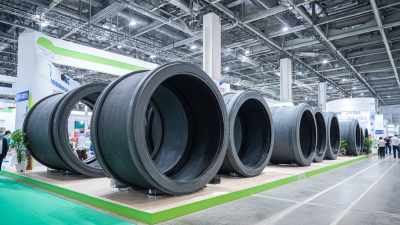
Innovative Sewer Pipe Sleeve Solutions Showcase at the 138th China Import and Export Fair 2025
The 138th China Import and Export Fair in 2025 serves as a significant platform for showcasing innovative solutions across various industries, with a particular focus on advancements in infrastructure technology. Among the key highlights of this year's fair are the groundbreaking sewer pipe sleeve solutions that promise to revolutionize the way we approach sewage management and pipeline repair. These innovative sleeves not only enhance the durability and efficiency of existing sewer systems but also offer cost-effective and sustainable options for urban development. As environmental concerns and infrastructure challenges continue to grow, the introduction of advanced sewer pipe sleeve technologies at this major event underscores the industry's commitment to creating robust solutions that address both functionality and ecological impact. Attendees of the fair can look forward to discovering these state-of-the-art offerings, which are poised to lead the way in modernizing our sewer systems and improving overall urban resilience.
Read more »
 By:Emily - October 20, 2025
By:Emily - October 20, 2025
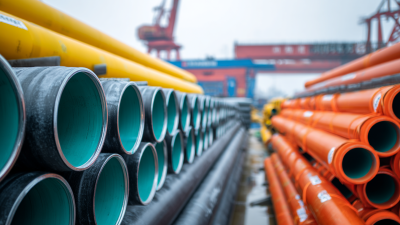
Innovative Pipe Sleeve Solutions Unveiled at the 138th Canton Fair 2025 in China
At the 138th Canton Fair in 2025, a remarkable array of innovative solutions for pipe sleeves captured the attention of industry professionals and enthusiasts alike. This pivotal event, renowned for showcasing cutting-edge technologies and products, offered a platform where manufacturers and suppliers presented their latest advancements in pipe sleeve design and functionality. From enhanced durability to improved insulation properties, these innovations promise to revolutionize various applications in plumbing, construction, and industrial sectors. Attendees were not only privy to demonstrations of the latest materials and manufacturing techniques but also engaged in meaningful discussions on the future of pipe sleeve technology. The fair underscored the vital role that pipe sleeves play in ensuring the efficiency and longevity of piping systems, setting a tone for further developments in the industry.
Read more »
 By:Liam - October 19, 2025
By:Liam - October 19, 2025
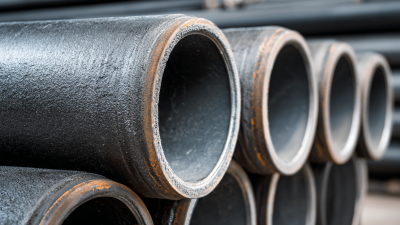
Exploring the Future of Sewer Pipe Sleeve Innovations at the 138th Canton Fair 2025: Industry Trends and Market Growth
As the 138th Canton Fair approaches in 2025, the spotlight on sewer pipe sleeve innovations is set to illuminate the future of the plumbing industry. This annual event serves as a crucial platform for showcasing advancements, networking, and exploring emerging trends in various sectors, with sewer pipe sleeves taking center stage due to their critical role in improving infrastructure resilience and efficiency. Innovative technologies are reshaping the market, addressing key challenges such as leakage prevention and maintenance costs. As industry professionals gather to discuss these topics, we can expect to see a surge in demand for advanced sewer pipe sleeve solutions that promise enhanced durability and lower lifecycle costs. This article delves into the exciting developments and potential growth within this niche market, highlighting the significance of sewer pipe sleeves in the broader context of industrial innovation and sustainability.
Read more »
 By:Liam - October 17, 2025
By:Liam - October 17, 2025
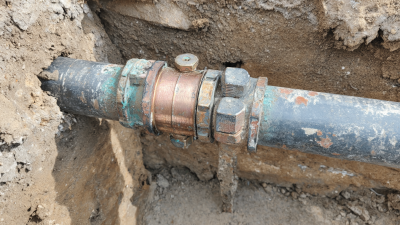
Why No Dig Pipe Repair is the Future of Sustainable Plumbing Solutions
In recent years, the plumbing industry has evolved significantly, driven by the pressing need for sustainable and efficient solutions. Among these innovations, no dig pipe repair has emerged as a game changer, offering a minimally invasive method that not only reduces environmental impact but also lowers costs associated with traditional excavation methods. According to a report by the American Society of Civil Engineers, approximately 240,000 water main breaks occur annually in the United States, which can lead to substantial water loss and infrastructure damage. No dig pipe repair techniques, such as trenchless technology, have been shown to decrease repair time by up to 70% and reduce overall project disruption, making them a preferred choice for municipalities and homeowners alike. As we look towards the future of plumbing, incorporating no dig pipe repair methods will not only enhance system longevity but also contribute to a more sustainable approach in managing our vital water resources.
Read more »
 By:Sophie - October 16, 2025
By:Sophie - October 16, 2025

How to Effectively Address Sewer Issues with No-Dig Solutions
In the realm of urban infrastructure, sewer issues can pose significant challenges for both homeowners and municipal authorities. Traditional methods of sewer repair often involve extensive digging, leading to disruptions in daily activities, increased costs, and potential damage to surrounding landscapes. However, the emergence of innovative no-dig solutions has revolutionized the way we approach sewer maintenance and repair. These modern techniques offer efficient and effective means of addressing sewer problems while minimizing disturbance. This article will explore the various no-dig methods available for sewer repair without digging, highlighting their advantages, technology, and real-world applications. By understanding these solutions, property owners and city planners can mitigate issues effectively while preserving the integrity of their environments.
Read more »
 By:Liam - October 14, 2025
By:Liam - October 14, 2025
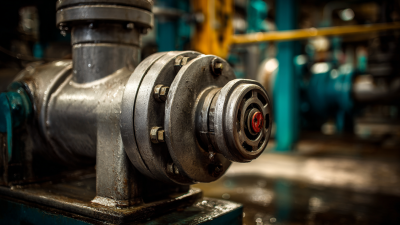
How to Identify Common Symptoms of Pump Issues Before Calling for Repair
In the realm of industrial machinery, maintaining operational efficiency is paramount, and understanding the symptoms of pump issues plays a critical role in ensuring timely pump repair. According to a report by the Hydraulic Institute, nearly 70% of pump failures are attributed to improper maintenance and early signs of dysfunction that go unaddressed. Recognizing symptoms such as unusual noise, vibrations, or fluctuating pressures can prevent costly downtime and extensive repairs. Moreover, the U.S. Department of Energy states that nearly 20% of the energy consumed in industrial processes is used by pumping systems, emphasizing the need for vigilance in their upkeep. By familiarizing yourself with these common indicators of pump malfunction, you can act proactively, potentially saving thousands in repair costs and enhancing the longevity of your pumping systems. Identifying these warning signs early can streamline the pump repair process, ensuring that operations continue smoothly and efficiently.
Read more »
 By:Emily - October 12, 2025
By:Emily - October 12, 2025
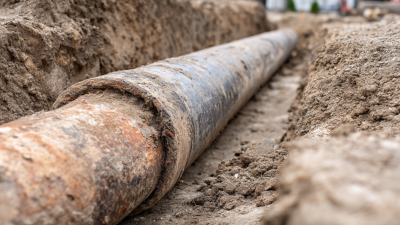
How to Effectively Address Sewer Line Issues without the Need for Excavation
In the realm of plumbing and infrastructure maintenance, sewer line repair without digging has gained significant attention due to its cost-effectiveness and minimal disruption to property. According to the American Society of Civil Engineers, the average cost of traditional excavation for sewer repairs can range from $50 to $250 per linear foot, not including potential landscaping restoration. Innovations such as trenchless technology allow for repairs with only small access points, reducing both the time and resources required for comprehensive repairs. Moreover, a 2021 report by the National Association of Sewer Service Companies indicates that trenchless methods can decrease project time by up to 70% compared to traditional methods, while also limiting the impact on surrounding landscapes. These advancements not only promote efficient repairs but also provide a sustainable approach to maintaining municipal and residential sewer systems, making the exploration of non-invasive repair techniques an essential consideration for homeowners and contractors alike.
Read more »
 By:Liam - October 11, 2025
By:Liam - October 11, 2025
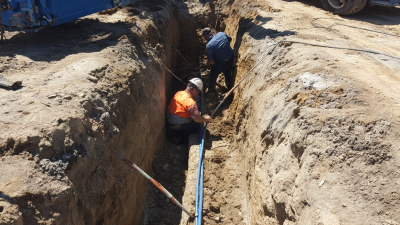
How to Use Trenchless Technology for Effective Sewer Repair Solutions
In recent years, the plumbing industry has made significant strides towards more innovative and less invasive methods for managing sewer systems, particularly with the increasing adoption of trenchless technology. Reports indicate that approximately 80% of sewer repairs can now be performed using non-intrusive methods, minimizing disruption to surface structures and environments. This approach facilitates "sewer repair without digging," which not only reduces labor costs and the time required for repairs but also lowers the risk of damaging existing infrastructure. The trenchless method has gained popularity among municipalities and private contractors alike, as it often results in more environmentally friendly solutions, decreased road closures, and less overall community disturbance. By exploring trenchless technology, stakeholders can achieve effective, efficient, and sustainable outcomes in sewer repair and maintenance.
Read more »
 By:Sophie - October 9, 2025
By:Sophie - October 9, 2025

How to Choose the Right Pipe Fixers for Your Plumbing Needs
When faced with plumbing issues, finding the right pipe fixers can be a daunting task. The intricacies of plumbing repairs require a blend of technical skills, experience, and the ability to diagnose problems accurately. Whether you are dealing with a leaky faucet, a burst pipe, or a complete plumbing overhaul, the professionals you choose play a crucial role in restoring order to your home. In this guide, we will explore essential factors to consider when selecting pipe fixers, including their qualifications, experience, customer testimonials, and the range of services they provide. By understanding the nuances of your plumbing needs and what to look for in a repair service, you can make an informed decision that ensures your plumbing system is back to optimal working condition in no time.
Read more »
 By:Liam - October 7, 2025
By:Liam - October 7, 2025
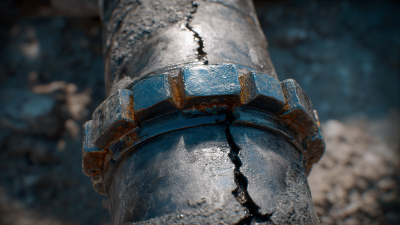
How to Effectively Utilize Pipe in Pipe Repair Techniques for Long-lasting Solutions
In the realm of plumbing and infrastructure maintenance, the method of "pipe in pipe repair" has emerged as a vital solution for ensuring the longevity and reliability of piping systems. This innovative technique involves enclosing an existing pipe with a new, smaller pipe, providing a protective barrier that effectively addresses leaks, corrosion, and wear over time. By utilizing this method, property owners and maintenance professionals can significantly extend the lifespan of their plumbing systems while minimizing disruption to operations. This comprehensive guide will delve into the step-by-step process of implementing pipe in pipe repair, highlighting essential tools, materials, and best practices to achieve optimal results. Whether tackling small-scale repairs or larger projects, understanding how to effectively utilize this technique can lead to sustainable and cost-effective solutions that safeguard infrastructure investment.
Read more »
 By:Liam - October 6, 2025
By:Liam - October 6, 2025
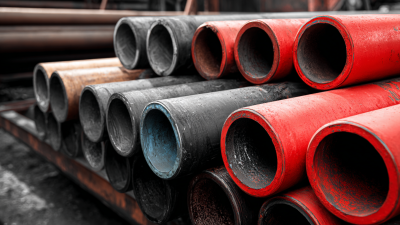
Ultimate Guide to Effective Pipe Sleeve Repair Solutions for Global Procurement
In the intricate world of global procurement, effective solutions for pipe sleeve repair have become paramount for businesses aiming to maintain efficient operations and minimize downtime. The growing complexity of industrial systems necessitates an understanding of various repair methodologies, particularly as companies seek innovative approaches to manage their infrastructure. This ultimate guide dives deep into the best practices and technologies available for pipe sleeve repair, highlighting industry standards, material selections, and cost-effective strategies. By embracing these cutting-edge repair solutions, organizations can not only enhance the longevity of their piping systems but also optimize their procurement processes for sustainability and resilience in an ever-evolving market. Whether you're a seasoned professional or new to the field, this comprehensive overview will equip you with the knowledge needed to make informed decisions in your procurement endeavors.
Read more »
 By:Emily - October 5, 2025
By:Emily - October 5, 2025
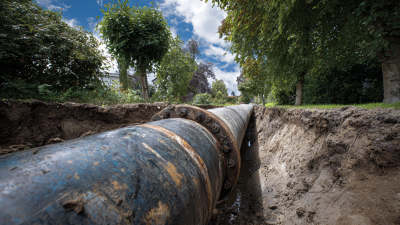
Understanding Sewer Line Relining: A Comprehensive Guide to Modern Pipeline Repair Techniques
Sewer line relining is revolutionizing the way we approach pipeline repairs, offering a long-lasting solution that minimizes disruption and cost. According to the American Society of Civil Engineers, approximately 250,000 sewer main breaks occur annually in the United States, underscoring the critical need for effective repair techniques. Traditional methods of pipe replacement can be both labor-intensive and costly, often requiring extensive excavation. In contrast, sewer line relining provides a trenchless alternative, enabling homeowners and municipalities to restore their pipeline integrity with less environmental impact and reduced operational downtime. Utilizing modern materials and advanced technology, this repair method can extend the lifespan of aging sewer systems by up to 50 years, making it an essential consideration for anyone looking to maintain efficient wastewater management.
Read more »
 By:Emily - October 4, 2025
By:Emily - October 4, 2025
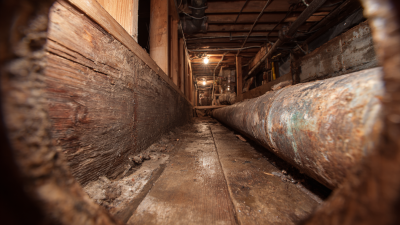
How to Identify Signs Your Sewer Line Needs Immediate Attention
Identifying signs that your sewer line needs immediate attention is crucial for homeowners, as neglected sewer issues can lead to costly repairs and health hazards. According to the Environmental Protection Agency (EPA), an estimated 1 in 10 homes in the United States experience sewer line problems each year, often resulting from tree root intrusions, pipe corrosion, or blockages from grease and debris. These issues not only disrupt daily life but can also result in environmental contamination if left unaddressed. Recognizing the early warning signs—such as foul odors, slow drains, or unusual lawn patches—can save homeowners from severe crises and extensive damage. In this blog, we will explore these indicators in detail, guiding you on how to protect your property and ensure your sewer line remains in optimal condition.
Read more »
 By:Liam - October 2, 2025
By:Liam - October 2, 2025
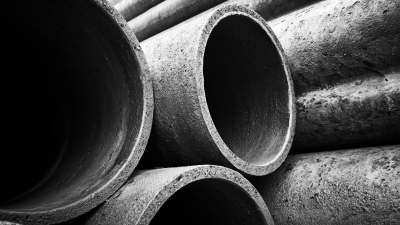
Complete Guide to Efficient CIPP Pipe Repair Techniques for Modern Infrastructure
As urban infrastructure continues to age, the need for effective and efficient repair methods becomes increasingly critical. The trenchless technology of CIPP (Cured-In-Place Pipe) repair has emerged as a frontrunner in the quest to restore aging pipelines without the need for extensive excavation. According to a report by IBISWorld, the pipe and sewer inspection industry has seen a steady growth rate of 4.3% annually, underscoring the rising demand for innovative solutions like CIPP pipe repair. This method not only enhances the structural integrity of existing pipes but also reduces environmental impact and minimizes disruption to daily operations. As municipalities grapple with aging pipelines, a deeper understanding of CIPP pipe repair techniques will provide essential insights to optimize repairs, extend pipeline life, and ultimately save costs in infrastructure maintenance.
Read more »
 By:Liam - September 30, 2025
By:Liam - September 30, 2025
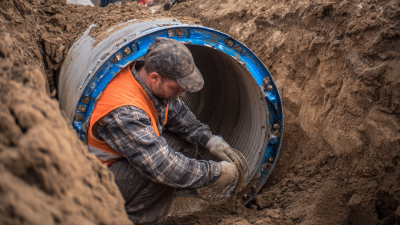
5 Best Internal Pipe Repair Sleeves for Reliable Water Line Solutions
In the realm of plumbing and water management, the integrity of piping systems is crucial for ensuring reliable water delivery and preventing costly leaks. According to the American Society of Civil Engineers, outdated water infrastructure in the United States alone has led to an estimated $50 billion annual cost in repairs and water loss. With aging pipes being a widespread concern, the demand for effective and efficient repair solutions has surged. One such solution gaining traction in the industry is the internal pipe repair sleeve, designed to provide a reliable, long-lasting fix without the need for extensive excavation. This innovative approach not only minimizes downtime but also reduces labor costs significantly, making it an attractive alternative for both residential and commercial applications. In this blog, we will explore the five best internal pipe repair sleeves currently available, helping you choose the most effective option for your water line solutions.
Read more »
 By:Sophie - September 29, 2025
By:Sophie - September 29, 2025

